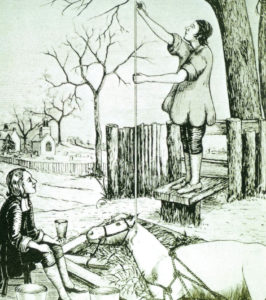STORIA DELLA MEDICINA
Le Grandi scoperte della Fisiologia:
Prima del 1600 si può dire che la fisiologia esiste solo in quanto «anatomia animata», come la chiamavano allora i suoi creatori, e la si individua solo a fatica impastoiata come era tra la metafisica e i dogmi religiosi. Alla fine del XIX secolo la fisiologia riesce finalmente, anche se con notevole ritardo, come tutte le altre branche della scienza medica, a diversificarsi.
Solo dopo il periodo rinascimentale contraddistinto dalla descrizione anatomica del corpo umano si afferma la fisiologia medica con la scoperta della circolazione del sangue ad opera di Harvey nel XVII secolo e dei meccanismi della generazione (Spallanzani), quelli della digestione (Réaumur, Spallanzani) e della respirazione dovuto a Lavoisier nel XVIII.
Le grandi scoperte della Fisiologia
Il Concetto di malattia dall’eta’ romantica alla medicina moderna:
All’inizio del XIX secolo, la medicina romantica dominava non soltanto in Germania, ma anche in Inghilterra, in Italia ed in Francia, dove la maggioranza dei medici, nella loro pratica quotidiana, si lasciavano guidare dai precetti della cosiddetta medicina fisiologica di Francois Broussais. René Théophile Laennec ebbe un approccio anatomo-clinico radicalmente nuovo. la lesione locale non era più, come nel pensiero di Morgagni, la causa prossima della malattia, e neppure, come pensavano i medici romantici, il suo effetto: essa era l’essenza della malattia, la sua definizione. Una frattura epistemologica separa la medicina anatomo-clinica parigina dalla patologia organica morgagnana.
Il concetto di malattia dall’età romantica alla medicina moderna
The evolution of cardiac catherization and interventional cardiology:
Claude Bernard (1813–1878). Auguste Chauveau (1827–1917).Etienne Jules Marey (1830–1904). First cardiac catheterization in a horse by Chauveau and Marey. Curves recorded by Chauveau and Marey. Catheter introduced by Chauveau and Marey into the left ventricle via the left carotid. Adolph Fick (1829–1901).
The advent of cardiac catheterization
The first human catheterizations:
Michel E. Bertrand. First X-ray picture obtained by Roentgen: the hand of his wife. First arteriogram obtained by injection of mercury compounds into the brachial artery of a cadaver. X-ray record showing the catheter in the right atrium The Nobel Prize in Medicine or Physiology: October 1956.
The first human catheterizations
Investigation of the pulmonary circulation:
André Cournand. Double-lumen catheter. Pressure curves: right ventricle, using double-lumen catheter. Pierre Maurice. Endocardial electrocardiogram. The three awardees of the Nobel Prize in 1956: Werner Forssmann, Dickinson W. Richards and André F. Cournand.
Investigation of the pulmonary circulation
History of interventional Cardiology:

- Left heart catheterization and percutaneous transfemoral coronary angiography
- Transseptal left heart catheterization
- Right cardiac catheterization with floating probes
- The pulmonary artery flow-directed balloon catheter
- Coronary angiography
- The first coronary angioplasties in Zurich
- Andreas Gruentzig in Atlanta
- ‘‘My first angioplasty’’
- The steerable catheters
- The monorail technique
- Catheter-delivered ultrasound for the treatment of peripheral and coronary artery disease
- The Cutting Balloon
- Recanalization and reperfusion in myocardial infarction
- The first stent implantation in man
- History of vascular stenting
- The Wallstent, the Wiktor stent, and drug-eluting stents
- Development of the Palmaz stent
- Percutaneous mitral balloon valvuloplasty using the double-balloon technique
- Trefoil balloon valvuloplasty
- Balloon aortic valvuloplasty
- The percutaneous mitral commissurotome
- From the butcher to the jeweller
- Percutaneous aortic valve replacement
- Catheter-based septal ablation for patients with hypertrophic obstructive cardiomyopathy








